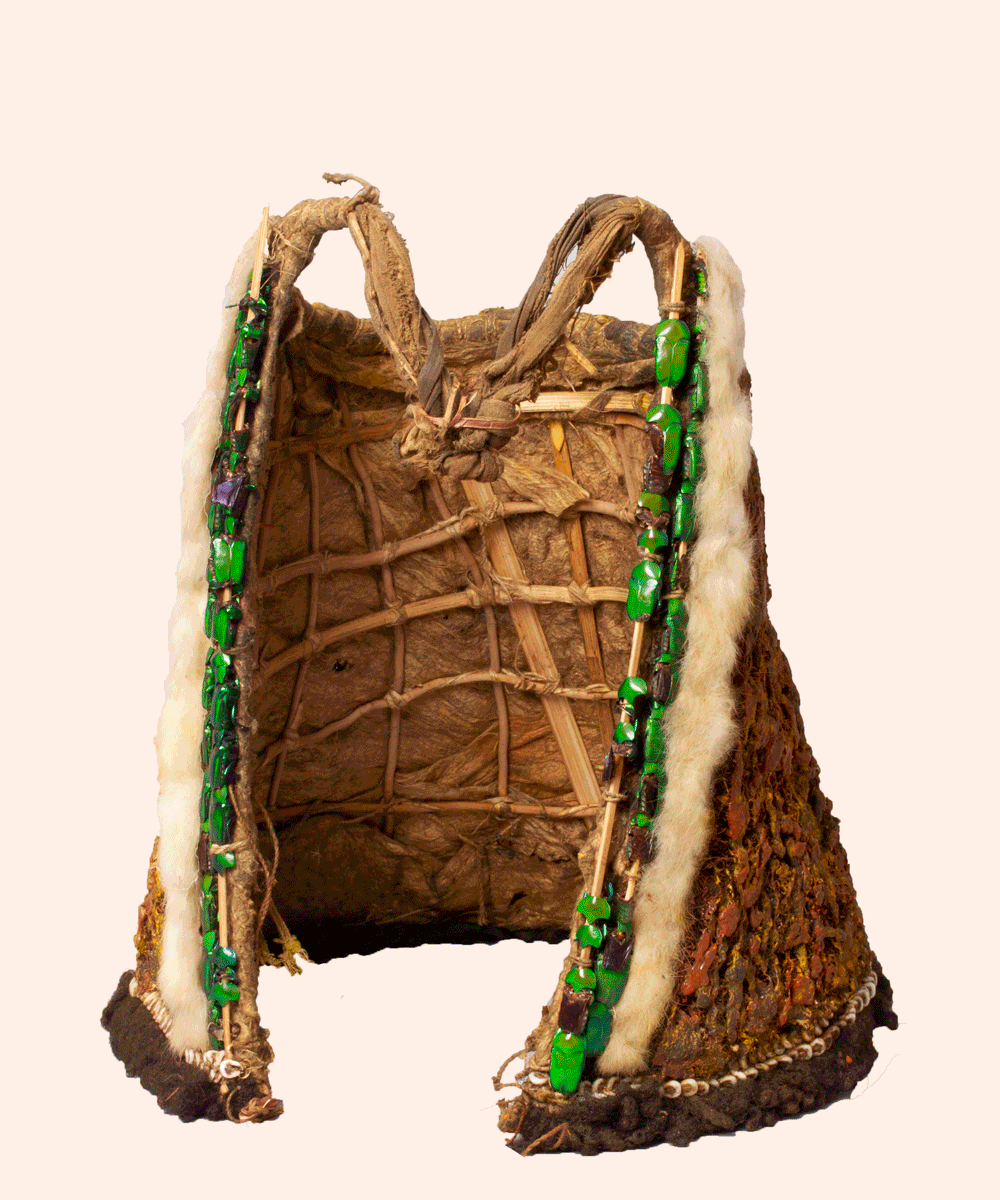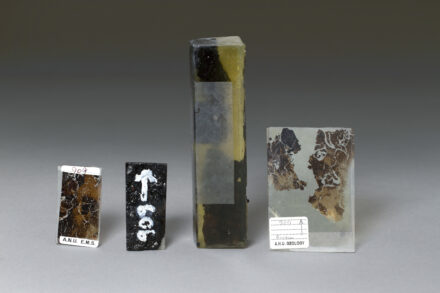

Article by Erin Gates
PhD Candidate,
Interdisciplinary Cross Cultural Research, ANU
This wig, collected by the anthropologist Dr. Marie Reay in the Highlands of PNG, concretely demonstrates in material form evidence of the social and spiritual order central to the Kuma people in the early 1950s. The exchange of material goods defined relations within and between clans. This peng wig (also known as a judge’s wig) was worn and used at the Pig Ceremonial, or Konggol, which allowed clans to contact and honour their ancestors, and display their wealth to other clans. An additional overriding theme of the ceremonial was the fertility of both women and pigs; thus, the future of the clan itself. While most of the attire would have been passed down patrilineally to the eldest son, a woman could also secure the honour of wearing a peng wig for her eldest unmarried daughter if she dutifully raised many pigs for her husband to slaughter at the ceremony. This is one such wig, obtained from Meian of the Kugika clan and worn by his daughter, Kome, during Reay’s doctoral fieldwork; it is built upon a wicker frame base, covered with bark, burrs, hair, resin, and trimmed with fur and iridescent green beetles that glimmered in the sunlight.
Writing about the Kongoll Reay observed:
Ritual approaches to the spirits display a certain style, a unity of symbol, language and idea. The natives’ manner of personal adornment expresses this style. Paradise plumes spray from their headdresses like tawny and golden fountains; iridescent pearlshell gleams from throat and waist; here and there, someone may be wearing a brilliant crimson or lemon wig. The most splendid and elaborate decorations are worn for the massed dances during the Pig Ceremonial; the gaudy peng or ‘judges’ wigs, for example, are made only when the wearers’ clan is celebrating the Konggol, and up to a dozen plumes selected for their freshness and sheen may wave from a single wig (Reay 1959, pp. 351).
Peng wigs were quite uncomfortable to wear, as the wigs were typically built upon a bamboo frame covered in bark cloth, which extends downwards to the wearer’s shoulders. Burrs and human hair were then used to cover the cloth before the wig was finally coated with a sheen of jiling tree gum. Previous to Reay’s fieldwork the wigs would have been worn continuously for the several months leading up to the Pig Ceremonial. Decorated head rests, peng page, were built specifically so that a man could even sleep in his wig. However, by the time Reay arrived in the eastern highlands this practice had ceased, and the headrests had been converted into pegs upon which to hang the wig during the night. A man would carry his headrest during displays in place of a drum.
Dr. Marie Reay was a pioneering anthropologist and a leading contributor to Australian and Pacific anthropology. She was the first to study contemporary conditions of Aboriginal communities in rural NSW, as well as the first woman to conduct extensive fieldwork in the highlands region of PNG. As a lecturer at the ANU from 1958-1988, she contributed substantially to the early history of the university; in particular as one of very few women academics.
Further Reading
Reay, M 1959, The Kuma: Freedom and Conformity in the New Guinea Highlands, Melbourne University Press on behalf of The Australian National University, Melbourne.



